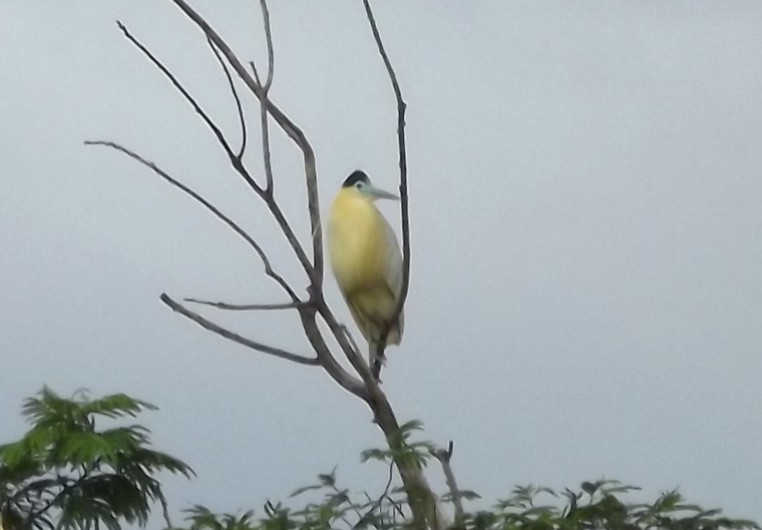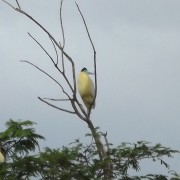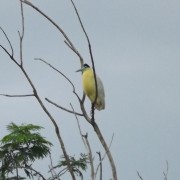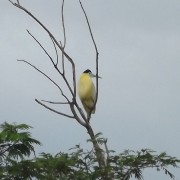Biodiversity
 Capped Heron
Pilherodius pileatus | Boddaert, 1783
Capped Heron
Pilherodius pileatus | Boddaert, 1783

Characterization: Large species measuring about 55cm in length. It is yellowish-white with an intense creamy color on its neck, around its eyes, the base of its beak is blue, it has a black cap and nape with a few long white feathers.
Distribution: From Panama to Paraguay, Bolivia and throughout Brazil.
Habitat: Rivers and lakes and on the edge of forests.
Habits: A diurnal, aquatic, and solitary species.
Diet: Carnivorous, this bird feeds on fish, aquatic insects (imagos and larvae), crabs, mollusks, amphibians, and reptiles. Sometimes it feeds on snakes and guinea pigs.
Breeding: This bird lays 1-2 eggs in a nest built on trees or shrubs in the swamps. It usually associates in mixed colonies, and procreation usually comes at the beginning or end of the dry season, when food for waterfowl is usually more plentiful.
In the UFRA area: The Capped Heron is considered uncommon in the studied farms because it was only seen 3 times. Its spatial distribution was restricted to mixed forests in regeneration and drainage ditches.






